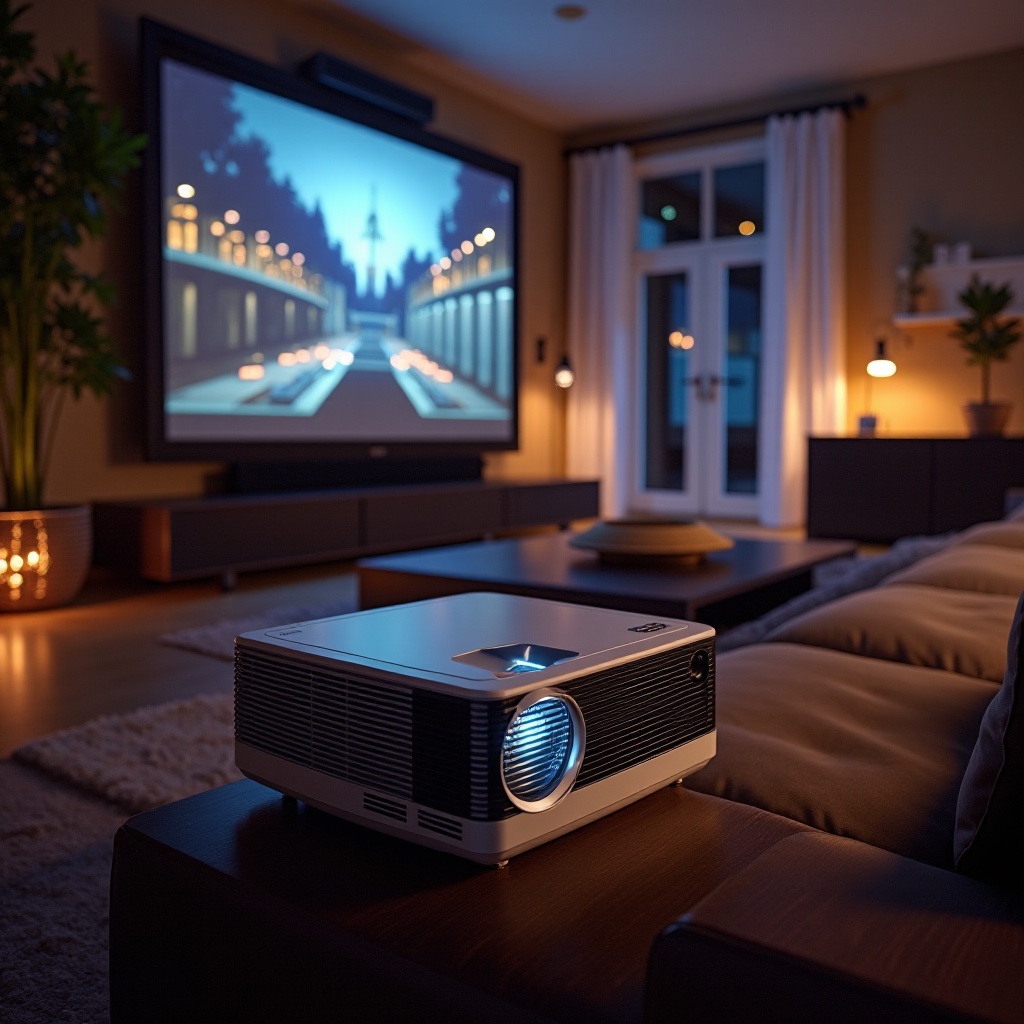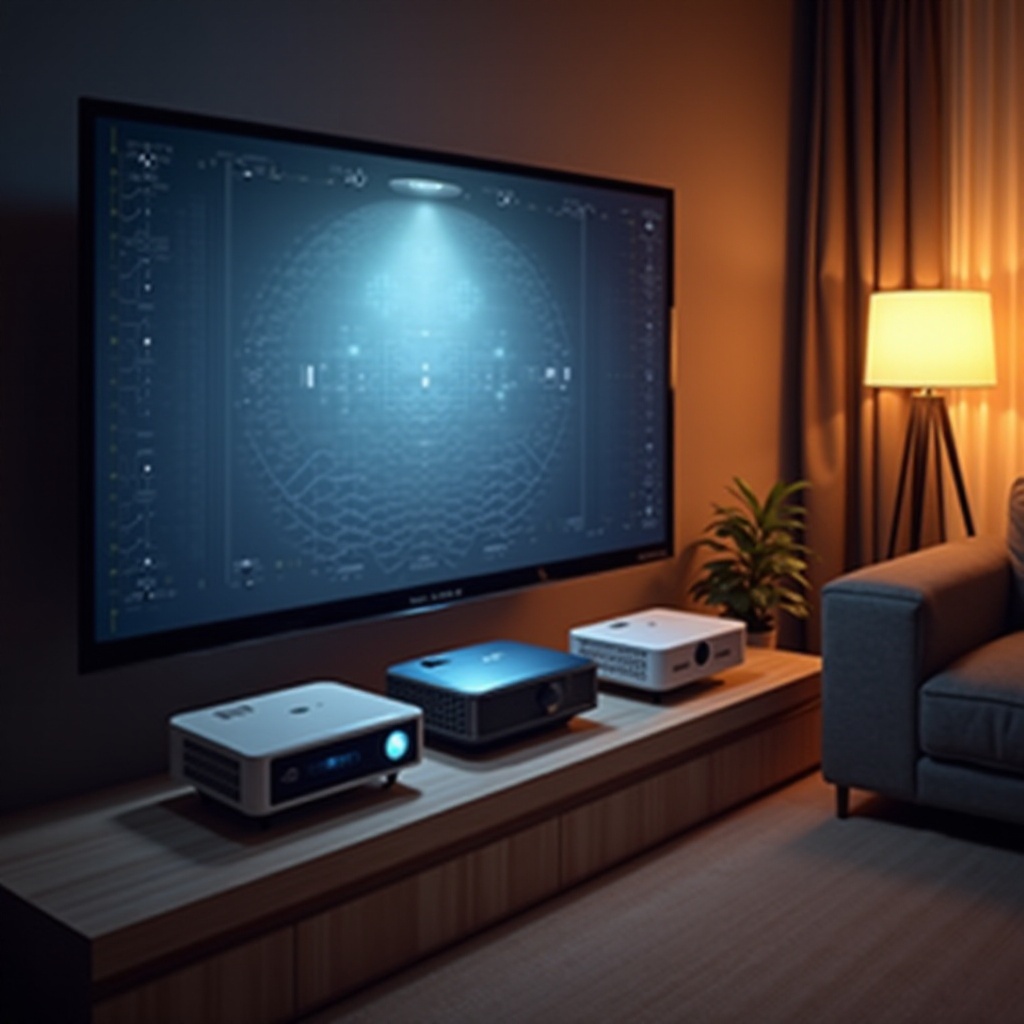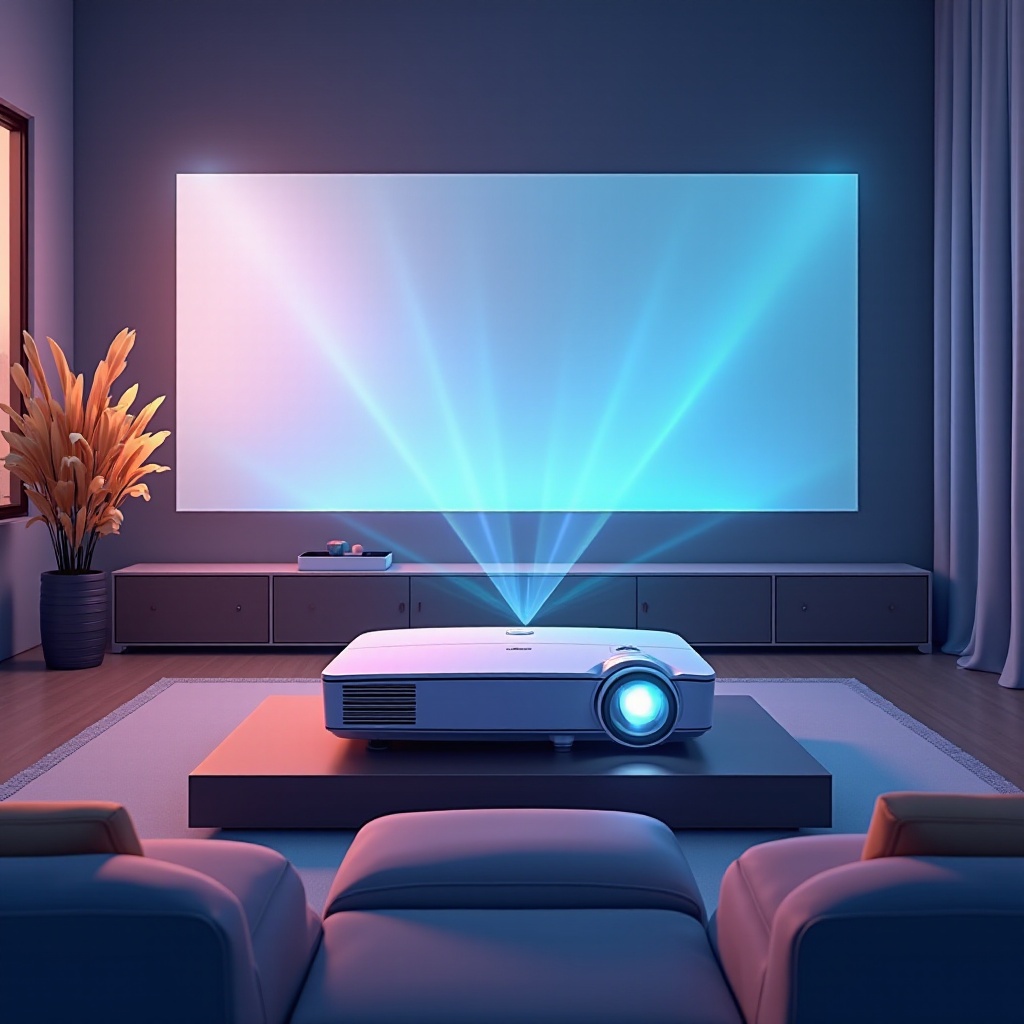Introduction
Choosing the right home projector can significantly enhance your home entertainment experience. With advancements in technology, there are numerous options available, making the selection process overwhelming. This guide aims to provide clarity by exploring different types of home projectors, highlighting their features, and helping you make an informed decision.

Understanding Types of Home Projectors
To select the appropriate projector, it’s crucial to comprehend the various technologies available:
- DLP (Digital Light Processing) Projectors: These projectors are renowned for their excellent color accuracy and sharp images. They’re particularly effective for fast-moving content, making them a top pick for gaming and action movies.
- LCD (Liquid Crystal Display) Projectors: Known for their bright images and vibrant colors, LCD projectors are a cost-effective option suitable for well-lit rooms.
- LCoS (Liquid Crystal on Silicon) Projectors: Combining DLP and LCD technologies, LCoS projectors offer superior color reproduction and image quality, often used in high-end setups.
- LED Projectors: These are energy-efficient, durable, and require less maintenance. However, they may not offer the brightness needed for larger, bright environments.
- Laser Projectors: Offering exceptional brightness and long-lasting performance, laser projectors are ideal for vibrant, large-scale image projection, even in well-lit spaces.
Understanding these technologies provides a foundation for assessing which projector type aligns with your needs. Let’s now explore how these projectors are tailored to specific uses.

Projectors Based on Usage
Projectors are not one-size-fits-all; they serve distinct purposes best suited for various activities:
- Home Theater Projectors: For movie enthusiasts, these projectors replicate the cinema experience with high resolution, excellent contrast ratios, and dynamic colors.
- Gaming Projectors: Offering fast response times and high refresh rates, these projectors minimize lag and are compatible with modern gaming systems.
- Portable/Compact Projectors: Perfect for users on the move, these lightweight and versatile projectors often come with built-in speakers and easy setup features.
- Outdoor Projectors: Specifically engineered for outdoor use, they boast high brightness levels to counteract natural light conditions.
- Short Throw vs. Long Throw Projectors: Short throw projectors are suited for smaller spaces as they project large images from a minimal distance, whereas long throw projectors are better for larger areas.
By identifying your primary usage, you can narrow down the projector types that best fit your lifestyle. Next, we’ll delve into the key features that further dictate the choice of a home projector.
Key Features to Consider When Choosing a Home Projector
Besides understanding the types and uses, it’s essential to evaluate specific features that influence performance:
- Resolution (4K vs. 1080p): Higher resolution results in more detailed and clearer images, with 4K being preferred by audio-visual enthusiasts for its superior clarity.
- Brightness and Lumens: The projector’s luminosity, measured in lumens, determines image visibility in brightly lit environments; higher lumens are preferable for such settings.
- Contrast Ratio: A higher contrast ratio ensures better image depth and quality, enhancing the viewer’s overall experience.
- Connectivity Options: Ensure the projector has necessary inputs like HDMI or USB ports and offers wireless capabilities for seamless device integration.
Equipped with this knowledge, you can more effectively narrow your choices. However, a projector’s potential is fully realized only through proper setup, which we will discuss next.
How to Set Up Your Home Projector for Optimal Performance
Installing your projector correctly ensures peak performance and viewing pleasure. Here’s how to achieve the best setup:
- Projector Screens and Mounts: Opt for a high-quality screen and mount the projector at the right angle and distance for optimal image quality and size.
- Audio System Integration: While integrated speakers are a bonus, investing in an external audio system significantly enhances sound quality.
- Room Setup and Lighting Conditions: Reducing ambient light improves image visibility. Consider blackout curtains or similar solutions in bright settings.
Proper setup amplifies the user’s projector experience, paving the way for a seamless, immersive viewing adventure. Now, let’s turn to the exciting trends shaping the future of home projectors.
Future Trends in Home Projector Technology
Home projector advancements continue at a rapid pace, with several notable trends on the horizon for 2024:
- Smart Projectors and AI Integration: Upcoming projectors are integrating AI for enhanced user interaction, offering voice control and linking with smart home systems.
- Enhanced Gaming and Immersive Experiences: As gaming grows more advanced, projectors are evolving to deliver faster synchronization for truly immersive play.
These advancements promise more intuitive and interactive experiences, making home projectors an even more compelling choice for entertainment enthusiasts.

Conclusion
Selecting the perfect home projector requires understanding various types and evaluating their features in relation to your specific requirements. Considering how you’ll use the projector, which features are most important, and how to set it up properly will ensure you elevate your home entertainment setup with the ideal projector choice.
Frequently Asked Questions
What is the best type of projector for a small room?
Short throw projectors are ideal for small spaces as they can project large images from a short distance.
How do I choose between LED and Laser projectors?
LED projectors are budget-friendly and durable, while laser projectors offer brighter images, ideal for large or bright environments.
Are portable projectors worth it for home use?
Yes, portable projectors are convenient for users needing flexibility and mobility, suitable for multiple rooms or outdoor use.
